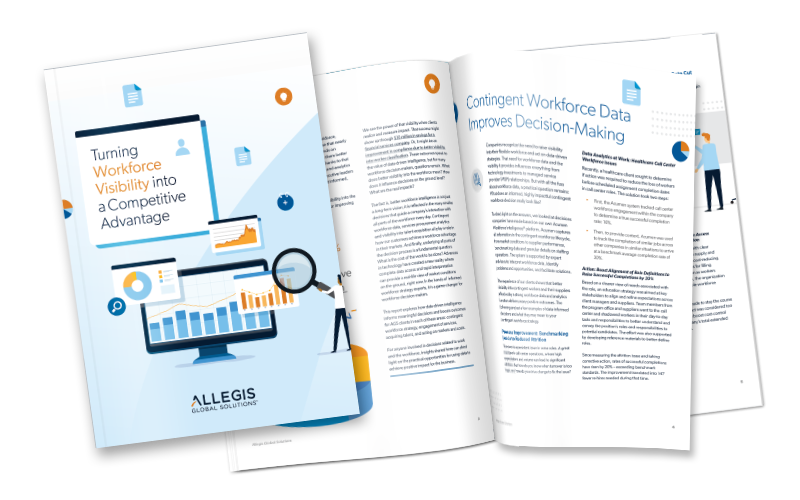How Talent Acquisition Drives Competitive Advantage in Today’s Workforce
People are a company's greatest asset. The workforce always has and always will be a deciding factor in whether a business fails or succeeds. From the boardroom to individual contributors, it's the actions of people that determine profits and allow companies to establish a competitive advantage over their peers.
As a general manager for AGS in China, the latter is something I’ve seen as particularly important when it comes to talent acquisition – especially with the current economic climate in China. The economy was thriving and vibrant when the pandemic hit global markets in 2020. However, China created domestic ecosystems that supported its economy and invested heavily into the growth of emerging industries, such as new energy vehicles and artificial intelligence.
According to the Organisation for Economic Co-Operation and Development (OECD), China’s gross domestic product (GDP) growth rebounded in the first quarter of 2023 to 4.5%, which happened as COVID-19 restrictions were lifted. Policymakers also made efforts to tackle challenges such as loosening housing market and reducing several key interest rates. Moving forward, a 4.5% GDP is expected in 2024.
Like many other parts of the world, the Chinese economy is also experiencing a slow recovery. The evolving nature of economic conditions has introduced unpredictability, and companies are facing high uncertainty. To adapt to the ongoing business landscape, enterprises will need to prioritise their workforce planning strategically.
An agile and well-executed workforce solution plays a vital role in empowering business strategies in the long term by addressing the critical need for talent. A strategic workforce partner can help with more than hiring; it can help with creating a diverse workforce, talent mobility strategies, identifying the right skill sets and talent attraction.
Economic Uncertainty Generates Conflicting Market Behaviours
In the post-pandemic era, many organisations have had to “right-size” due to the slow recovery of global markets. Amid this economic uncertainty, we have observed two conflicting market behaviours:
1. Limited Range of Talent
While some organisations previously looked at the top quarter of the market's talent, they are now shifting their focus to an even more tightened talent pool. Considering such a limited range of talent means organisations are restricting their search in hopes of finding high-potential employees with the right skill sets. This also impacts organisations in balancing their diversity, equity and inclusion (DEI) goals as the talent pool is considerably narrower. Additionally, hiring high-value talent means organisations need to offer competitive renumeration to attract and retain talent.
2. Misuse of Resources
On the other hand, some organisations believe there is unlimited talent available in the market, and they can fill positions easily. As such, they do not believe in having a talent acquisition strategy in place. This approach results in a lack of clarity regarding talent needs and potentially wastes valuable resources in trying to acquire the right talent.
Regardless of the approach, companies should strive to deliver a good candidate experience that can boost their employer value proposition (EVP). In today’s uncertain environment, creating a strong EVP can only help organisations attract good talent. In both of these scenarios, the need to establish a competitive advantage is paramount and an effective talent acquisition strategy can play a key role in this.
Finding the Right People (with the Right Skills) for the Job
It goes without saying that hiring the best people will benefit a business, but this is easier said than done. For example, in China’s recovering labour market, numerous challenges remain due to changes in demographics: the number of people ages 16 to 59 is gradually declining, resulting in a significant employment drop. In addition, with the growing unemployment rate, job market competition has been quite fierce, especially for skilled and high-salaried positions.
To be competitive in today’s job market, aspiring talent must have strong educational backgrounds and relevant work experience. Rising confidence will see talent movement increase, but there will be fierce competition between organisations to attract the best. It is the companies that succeed in this struggle that will have the optimum opportunity to take advantage of the recovery.
Further, increasing numbers of companies are rethinking their workforce models to shift the primary focus from candidates’ degrees and experience to skills. This helps employers broaden talent pools by attracting more diverse talent into their organisations. This approach also boosts cost savings as companies can upskill existing employees who are familiar with the company culture instead of spending resources to find and onboard someone new.
The movement of talent is rarer in countries where the economic situation remains difficult, but this can make securing high performers all the more vital. Bringing in top talent at a time when competitors are scaling back their own recruitment efforts can make a difference in a tough economy.
It’s also important to remember that relationships are at the core of effective talent acquisition and building good relationships with potential candidates can prove beneficial both immediately and in the long term.
Diversity in the Workforce: A Business Imperative
It's no longer up for debate that a diverse workforce at multiple levels gives organisations an edge, and must be approached with intention. Diversity sourcing is increasingly important in today’s global marketplace where DEI can help diversify talent pools through access to a wider range of skills and experiences; thereby leading to increased innovation.
Finding the right person for the job should always be any hiring strategy's No. 1 concern but making the process as inclusive as possible will increase your chances of reaping the benefits provided by having a diverse workforce.
Embracing Technology Impacts Competitive Advantage
Technology is central to every aspect of the business world and recruitment is no exception. Implementing a recruitment strategy that has its finger on the pulse and is at the forefront of the latest developments is key to achieving competitive advantage.
With the dynamic change of the global economy, the requirements for talent recruitment are becoming higher, and talent acquisition and HR are looking to improve the quality and efficiency of hiring more than ever. This trend has required companies to bring more innovation into the recruitment process.
The use of recruitment technology revolutionises the way employers make hiring decisions since companies can access more talent and save time during the candidate screening process. Technology reduces efforts for both employers and applicants with automated tools that support sourcing, assessments, scheduling interviews and candidate communications.
Talent Management Strategies Promote Flexibility and Agility
While hiring the best talent alone is enough to establish a competitive advantage, taking a flexible approach to workforce management can expand the benefits even further. Being able to easily move between recruitment process outsourcing (RPO) solutions and contingent workforce solutions – depending on your specific needs at any one time – will improve the speed and efficiency of your acquisition efforts. This will leave your company primed and ready to adapt to any economic changes in what is still an uncertain time, and this flexibility can put you one step ahead of your competitors.






